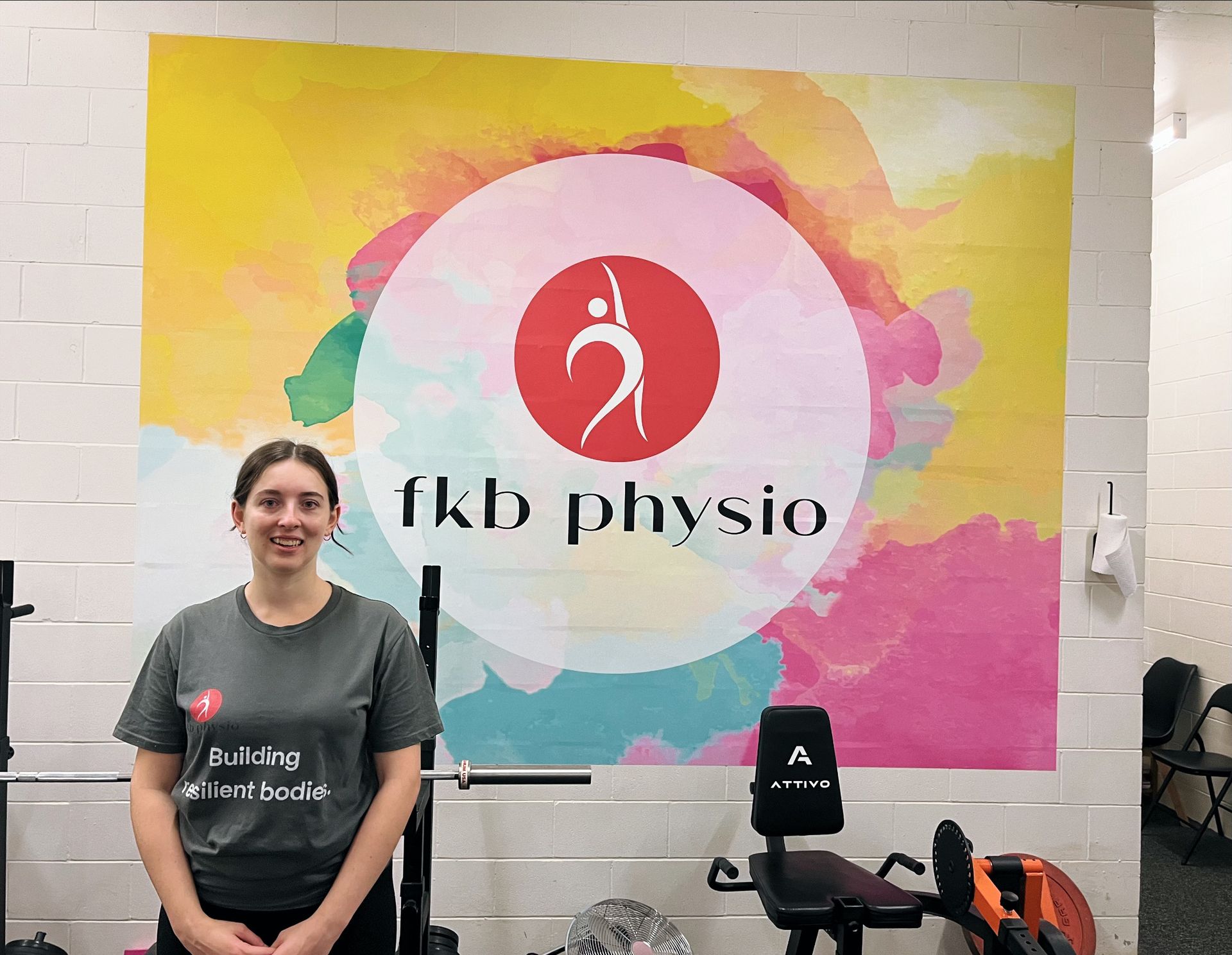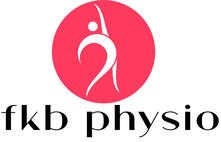How my personal experience with hypermobility and chronic pain led me towards physiotherapy
From dislocating her knees putting on her jeans to approaching her first 100kg deadlift, our physiotherapist Sarah talks about why she chose to become a physio, and why she is so passionate about supporting people with pain and hypermobility to learn safe ways to move their bodies.
I have a bit of an unconventional background for a physiotherapist.
I was a pretty inactive kid and always found exercise incredibly difficult growing up so would avoid it where I could – I remember mum trying to make me feel better about coming last in my first cross country when I was 5 – to be honest 5 year old Sarah didn’t understand the point of a race and it didn’t make sense to me that everyone was running (running did not feel good so why would people do that on purpose)- point being I wasn’t an exercise person.
In my teen years I had a few atraumatic dislocations – my kneecaps dislocated wearing tight jeans, and each of my shoulders dislocated at separate times when turning a lamp off, and taking off a jumper. (Strangely), I didn’t think that these were too problematic so didn’t seek medical advice. The kneecaps involved a lot of screaming but when my parents tried to move me they self-reduced (went back to where they’re meant to be) and the pain dropped off considerably. I don’t think I even told my parents about the shoulders, but they also luckily went back to where they belong with some panicked reflexive movements and I just pushed on.
In hindsight, this isn’t standard body behaviour, and is likely due to the fact that I am hypermobile – which means my joints can move further than most peoples are able to. Not all hypermobile bodies are the same and not all people are hypermobile for the same reasons. Some hypermobile people have no dislocations/pain, and others on the more severe end of the hypermobility spectrum may experience frequent dislocations and debilitating pain, among other symptoms that often coexist with severe hypermobility and related diagnosis’.
Anyway, I continued to hate and mostly avoid exercise until I was about 18, when I was invited to try social futsal. For those who are not aware, futsal is like soccer but on a tiny court, so less running, which seemed alluring. I am super competitive, so made up for my lack of skill by throwing my body into people (I don’t recommend this because 1. It’s pretty bad sportsmanship which I didn’t realise at the time, and 2. It’s dangerous for everyone). Luckily, I only ended up injuring myself – I tore my meniscus (some cartilage in my knee) and the pain stopped me from putting weight on my leg, so off to the doctor I went.
The doctor referred me to a physio. I’d like to say this was where I became inspired to study physiotherapy but unfortunately not. I had no idea what a physios role was at the time, and when my pain wasn’t immediately cured I (ironically) decided that physio was rubbish and didn’t go back.
So instead of rehabbing my knee I limped around on crutches for a while, ended up overusing and hurting my other knee, and developed chronic bilateral knee pain that would not budge.
After about 6 months I realised I needed to do something about this because the pain was getting worse. I heard about Pilates somehow so signed up for a class and quickly became hooked. For the first time, I enjoyed exercising – the movements were slow enough and the load light enough for me exercise without bad pain/exhaustion/feeling completely uncoordinated, and I loved the feeling of exercising independently in a group setting. The type of Pilates I was doing was very low intensity strength training but because I was starting from ‘joints randomly dislocating sometimes’ level strength this was enough of a stimulus to get results. My knee pain improved a little bit, and my other random aches and pains weren’t as noticeable. The classes I went to were not based on the principles of progressive overload, and the same workout was used for all abilities, so it wasn’t the most effective exercise I could have been doing, but it was enough to start improving my strength and pain.
I became pretty obsessed with Pilates, and in my early 20s I decided it was time to turn things up a notch – exercise was making my body feel a bit better so I figured more would help further – which seems pretty plausible. Despite my best intentions, I didn’t have a solid understanding of the principles behind exercise so ended up underfuelling and overtraining to the point where my body had had enough. I was no longer making progress, things were starting to hurt more than they were when I began, and I was tired all the time. It got to the point where a five minute walk would leave me exhausted and I was napping 3 hours every day.
At this point, I wasn’t able to continue exercising, and my mental health absolutely plummeted. I realised how important movement was for mental wellbeing, and also came to the conclusion that I needed to learn a whole lot more about how to exercise safely and effectively. I tried google, but it seemed everyone had a different approach/opinion and many of these were limiting, contradictory and unsubstantiated. I did a bit of research on where I could find reliable information and decided that studying physiotherapy would help me acquire the knowledge I was seeking. Luckily I got in.
Almost everyone in my family has chronic pain, so prior to studying physio I didn’t think it was that unusual to have low grade body wide aches and pains everyday, and trouble carrying 3 litres of milk/feel the effort standing up after going to the loo in my 20s. I knew I was on the less fit side of things, but figured that the jump between where I was and where I wanted to be just required a bit more knowledge and ‘discipline’. I still didn’t quite realise that the way my body responded to exercise wasn’t the norm for most.
As I learned about exercise principles and progression, I tried to apply them to myself. The hardest thing was finding the right baseline to start off with and build from. I also needed to learn to manage my shoulder and knee pain. This took a lot of time/patience/trial and error, as due to my hypermobility, it was tricky to find movements that didn’t hurt. The appropriate baseline I needed to work from was significantly less than what the exercise guidelines recommend and what most people can typically tolerate. I tried and failed what ‘should work’ over again, until I gradually developed the understanding of how my individual body responded to exercise and what it needed for strength training to be effective.
Once I got this right, I was able to progress my strength training much more quickly. As I developed strength, my aches and pains became less frequent and intense, my knee and shoulder pains were no longer limiting during training sessions, and I just generally felt a whole lot better. I remember realising when it became easy to get up off the loo, carry groceries and walk uphill. Things got even better again when I started working with a coach (shout out to Michael Bates from Be You Coaching), who was able to further my knowledge again and show me where I could afford to push myself further – Because I would overshoot when I first began exercising, I tended to undershoot once I found my baseline, and working with Michael helped me to learn when and how to progress the weights I was lifting at a safe and tolerable but still effective pace.
I’m a bit of a major nerd If I’m interested in something. Because chronic pain and difficulty with exercise is something myself and much of my family has experienced, my curiosity went nuts when we began learning about pain during my physio studies. Pain science has rapidly evolved in the past few decades, and although we know much more than we did several years ago, healthcare’s collective understanding of pain and how to best manage it still has a way to go.
Due to the complexity involved with chronic pain, unfortunately there is no simple one-size-fits all approach to treating it – all bodies respond differently to different treatment approaches, and I find it really rewarding to work with people and help them solve their individual ‘pain puzzle’. There is always something new to learn about pain, and since graduating last year I have completed the Neuro-orthopaedic Institutes ‘Explain Pain on Demand’ course, recently attended a conference on understanding and conceptualising pain by the researchers at University of QLD’s Recover Injury Research Centre, and read several books by some incredibly clever people at the forefront of pain research (that my poor partner has had to hear all about) to continue to develop my understanding of how to effectively help others with pain. I am stoked to be able to work somewhere where keeping up with the research and providing evidence based, person-centred care is prioritised, and I hope to upload a blog post soon about some key takeaways about pain from these experiences – so stay tuned!
I am incredibly lucky to have had the support and opportunity to learn to self-manage my pain and improve my physical capacity. I’d like to point out that I was fortunate that my experience of chronic pain was only briefly preventing me from participating in things I found important and I had the resources to learn to manage it independently – I recognise that for many people, chronic pain is debilitating and consuming in all aspects of life, and unfortunately rarely has a straightforward one-size-fits all management approach. I am incredibly passionate about helping others learn how to develop their strength and fitness whilst managing and working with chronic pain, and feel my personal experience provides unique insight into helping people with hypermobility/chronic pain/low exercise capacity get started. It is such a privilege to help people discover their strength and see the change that gradually happens when they realise they can do something they never thought possible.
Sarah is available for bookings on our services page. You can also contact her at info@fkbphysio.com.


